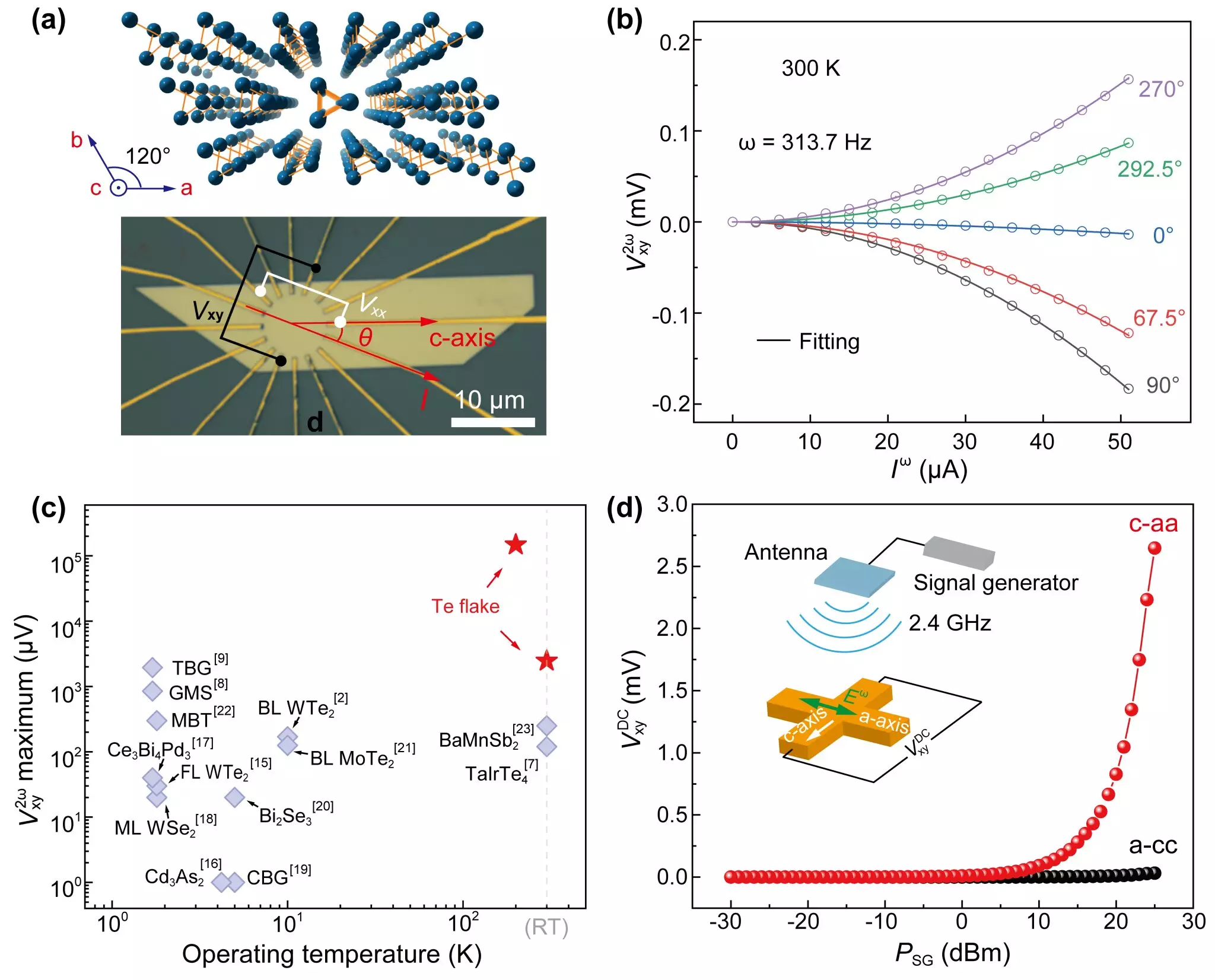The Nonlinear Hall Effect (NLHE) has emerged as a captivating field of study within condensed matter physics due to its potential implications for electronic device innovation. Unlike traditional Hall effects which yield linear responses, NLHE can produce signals through an applied alternating current (AC) without necessitating an external magnetic field. This phenomenon holds promise for applications such as frequency-doubling and advanced rectification technologies. However, the realization of practical devices utilizing NLHE has been significantly stymied by constraints related to low output voltages and the need for cryogenic operating conditions.
Historically, research has demonstrated NLHE primarily in specific materials like Dirac semimetal BaMnSb2 and the Weyl semimetal TaIrTe4. Both show limited Hall voltage outputs and lack the necessary tunability that could broaden their practical applications. These limitations have necessitated a search for new materials capable of exhibiting superior NLHE characteristics, particularly at more accessible temperatures.
The recent study published in Nature Communications showcases an innovative approach where a research team focused on elemental semiconductor tellurium (Te), recognizing its unique properties. Tellurium presents a narrow-bandgap and features one-dimensional helical atom chains that disrupt inversion symmetry. These characteristics qualify Te as a prime candidate for exhibiting pronounced NLHE, enabling potentially lower barriers to practical application.
The investigative efforts of the team yielded remarkable results: significant NLHE was detected in thin flakes of tellurium at room temperature. With the application of external gate voltages, the 2.8 mV output recorded was an unprecedented achievement, surpassing previous records by an order of magnitude. These findings not only highlight the effectiveness of Te in generating Hall voltage outputs but also illustrate the interplay of extrinsic scattering mechanisms and the unique surface symmetry breakage intrinsic to the thin flake structure.
The research breakthrough did not stop with NLHE; the team expanded their exploration by replacing traditional AC currents with radiofrequency (RF) signals, leading to the realization of wireless RF rectification in tellurium. They demonstrated stable rectified voltages across a diverse frequency spectrum from 0.3 to 4.5 GHz. This capability distinguishes Te-based Hall rectifiers from conventional ones that typically depend on p-n junctions or metal-semiconductor interfaces, suggesting a new path for developing more efficient energy harvesting and wireless charging solutions.
Through their meticulous experimentation and theoretical insights, the team, spearheaded by Prof. Zeng Changgan and Associate Researcher Li Lin from the University of Science and Technology of China, has profoundly contributed to the understanding of NLHE in solid materials. By harnessing the unique attributes of tellurium, this research propels forward the potential for advanced electronic devices. This work not only promises novel applications in energy systems but also signifies a crucial step towards realizing more versatile and powerful electronic materials. As researchers continue to delve into this exciting domain, the implications for future technological advancements are bound to be significant and transformative.


Leave a Reply